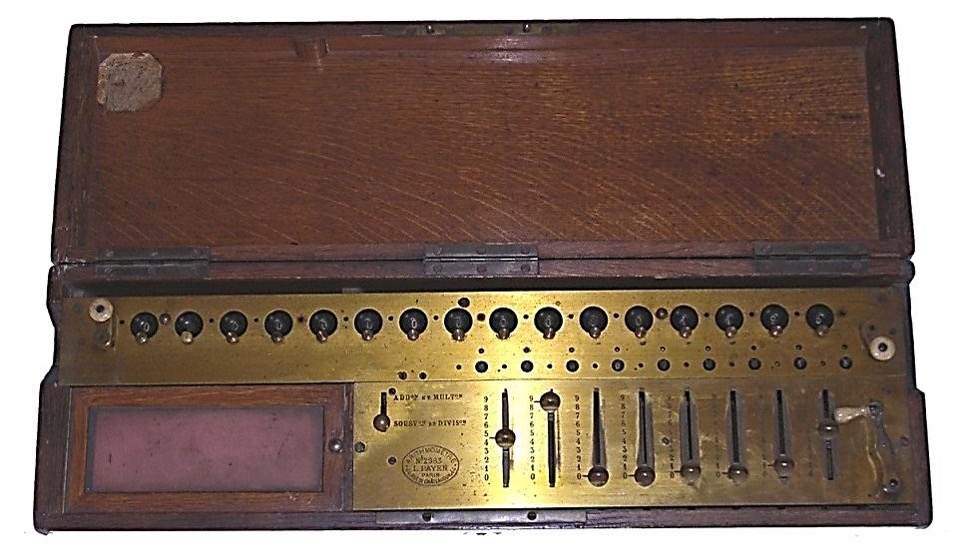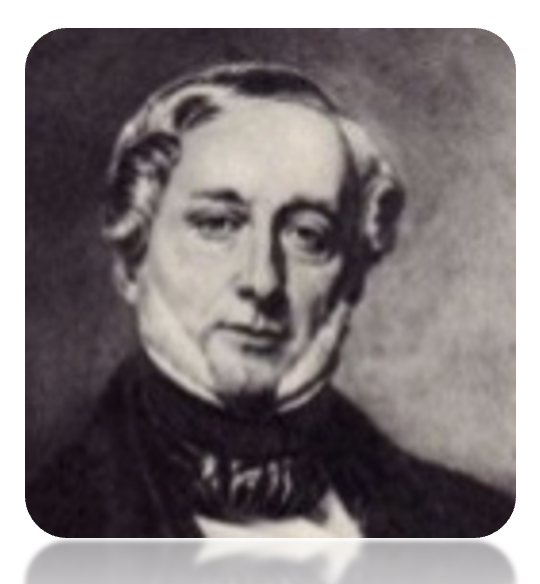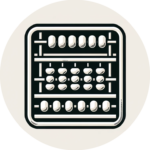PAYEN ARITHMOMETER, 1880
Inventor
Patent 138912 in 1880 bought from X. Thomas de Colmar family
Invention date
Unknown
Manufacturing date:
1895 (n° 2983)
Manufacturing location
Paris
Manufacturer
L. Payen
Dimensions
L 58 H 9.5 W 18
Reference Number
024

History and Functionality
Under the leadership of Louis PAYEN (France), who purchased the patent from the son of Xavier THOMAS de COLMAR, and later under the leadership of Payen’s widow, the arithmometer evolved rapidly with more reliable machinery, more manageable erasers, enhanced ease of use, easier to read cursors, and a removable cover.
Driven by growing needs for more computing power and the fact that the first arithmometers could only be repaired in Paris, a number of clone manufacturers appeared – primarily in Germany and England: Archimedes, Austria, Bunzel-Delton, Burkhardt, Gräber, Ideal, Layton, Liliput, Madas, Peerless, Procinto, Reuters, Saxonia, Shires, Tim, and XxX.
From 1900, the arithmometer lost the leading calculating machine position it held for 50 years. The production of arithmometers began to be exceeded in volume production by more modern machinery and models suitable for more heavy duty use. Two competitors were keyboard machines in the U.S.: comptometer of Felt & Tarant and the Burroughs machine (two very fast adders) and two pinwheel arithmometers in Europe: Odhner in Russia and Sweden and Brunsviga in Germany (two tools able to do the four operations). Production of the Payen arithmometer halted in the middle of World War I.
About The Inventor
Xavier Thomas de Colmar, born in 1785 in France, was a pivotal figure in the history of mechanical calculators. He is most renowned for his invention of the Thomas Arithmometer, the first commercially successful mechanical calculator and a landmark development in the field of computational technology.
After his pioneering work with the Thomas Arithmometer, his family continued to contribute to the evolution of mechanical calculators, one notable example being the Payen Arithmometer.
The Payen Arithmometer, developed in the latter half of the 19th century, was an advancement on the original Thomas Arithmometer. This device, like its predecessor, was designed to perform the basic arithmetic functions: addition, subtraction, multiplication, and division. However, it featured improvements in design and functionality, enhancing its efficiency and ease of use. The Payen Arithmometer was a reflection of the continuous efforts by Thomas de Colmar’s family and associates to refine and advance mechanical computing technology.
Their work exemplified the shift towards more sophisticated and user-friendly computational devices during an era of rapid industrial and technological growth. The Payen Arithmometer, while maintaining the core principles of the original Arithmometer, incorporated enhancements that made it more practical for a wider range of applications in business, science, and engineering.

